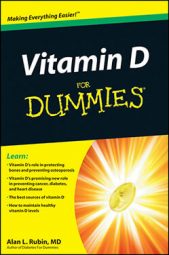Although a newborn baby doesn’t need as much vitamin D as required by the pregnant or nursing mother, she continues to need sufficient vitamin D. Bones, organs, and critical structures in the brain are developing, and sufficient vitamin D appears to be essential to growth and development.
There’s no doubt that children born with a vitamin D deficiency won’t reach their full height or bone density because of the important role vitamin D plays in calcium metabolism — these conditions will affect them throughout their lives.
Breast milk contains almost no vitamin D. It’s possible that babies are supposed to get vitamin D through sunlight exposure, and getting it through milk at the same time could lead to vitamin D toxicity. In our modern era of protecting babies from sun, they’re left with no natural source of vitamin D.
Although the exact vitamin D levels that are protective for babies aren't known, some studies suggest that adequate vitamin D status may also provide
Resistance to asthma and upper-respiratory infections
Resistance to autoimmune diseases like type 1 diabetes
Possible avoidance of autism
Possible resistance to multiple sclerosis
Possible avoidance of cavities
Possible avoidance of newborn infant heart failure
Possible avoidance of schizophrenia later in life
These relationships still need to be established with careful clinical trials.
The American Academy of Pediatrics understood this need for vitamin D, and in 2008 the academy recommended that children get 400 IU of vitamin D each day.
Even after the American Academy of Pediatrics published its new recommendations, few children were getting the old level of vitamin D (200 IU per day), much less the new level (400 IU per day). When children were evaluated in 2010 to see if they met the 2008 recommendations, only half of the infants met the old recommendations and fewer than a quarter met the new recommendations.
It’s especially important that breast-fed babies are looked after because the breast milk contains almost no vitamin D, and yet many women think that breast milk contains all the nutrition that babies need. For formula-fed babies it’s less of a concern because formulas are supplemented with vitamin D in amounts that should give about 400 IU per day.
Children should be treated on an individual basis. The baseline 25-hydroxyvitamin D can be measured if there is any doubt, and enough vitamin D should be given to bring the level to at least 20 ng/ml (50 nmol/L). When kids walk and play outside, this isn’t a hard standard to meet.
Dermatologists worry that the skin of infants and young children is particularly sensitive to sunburns. By using 400 IU from a daily supplement, you can be fairly certain that your infant is getting enough vitamin D without worrying about too much sun.

